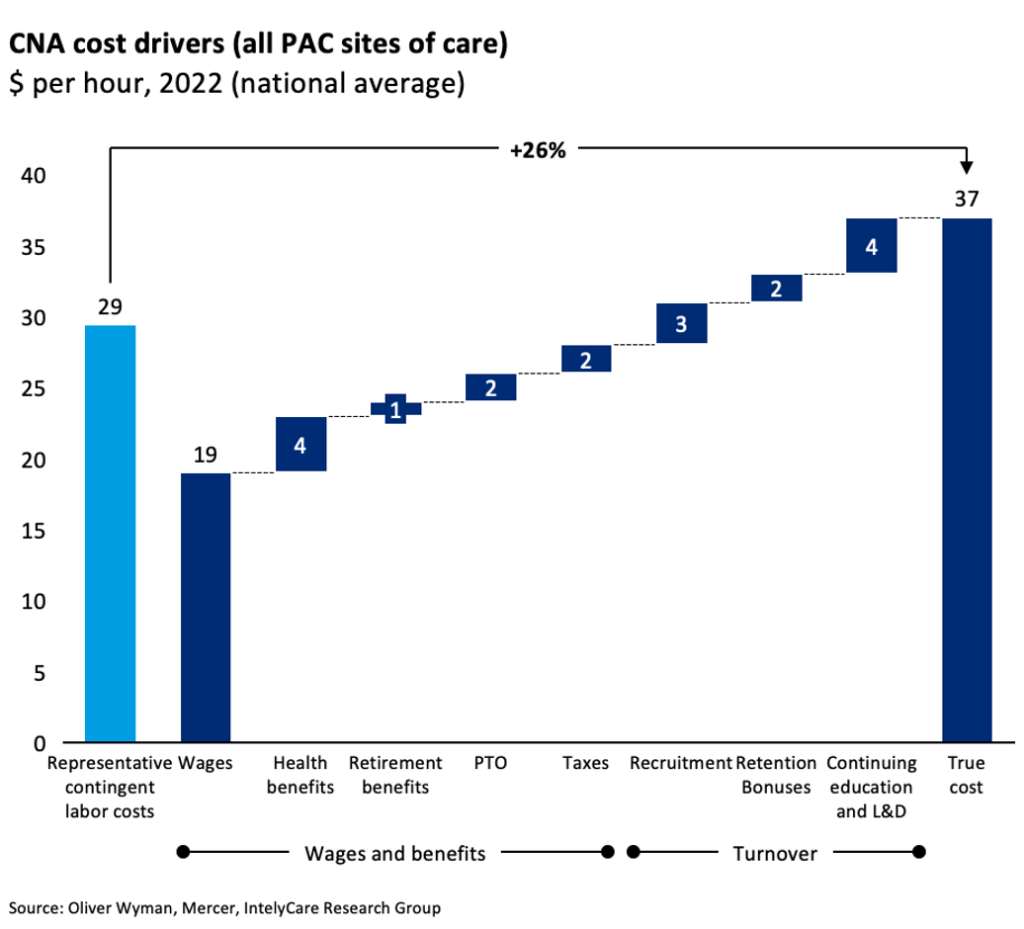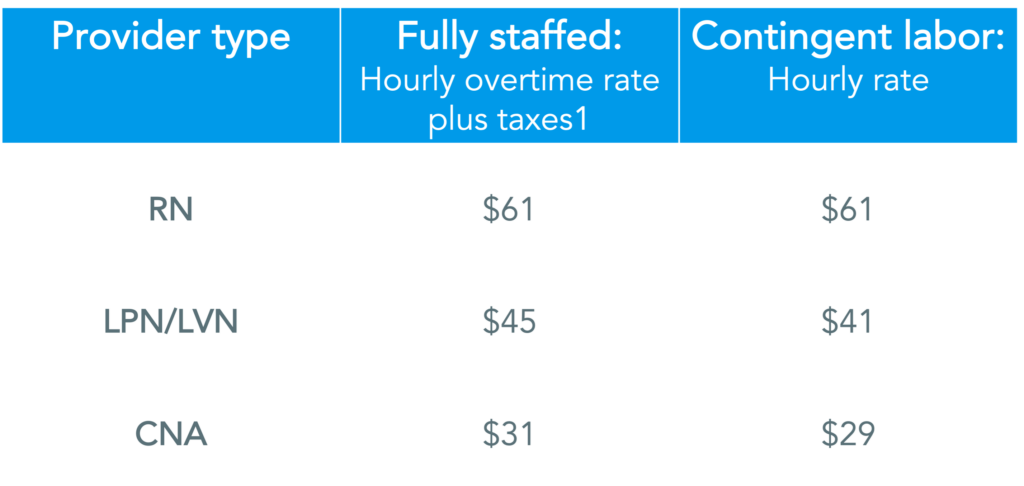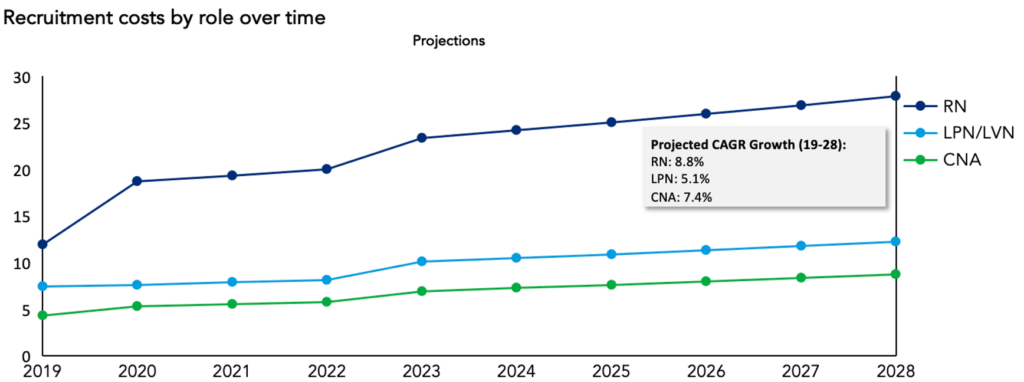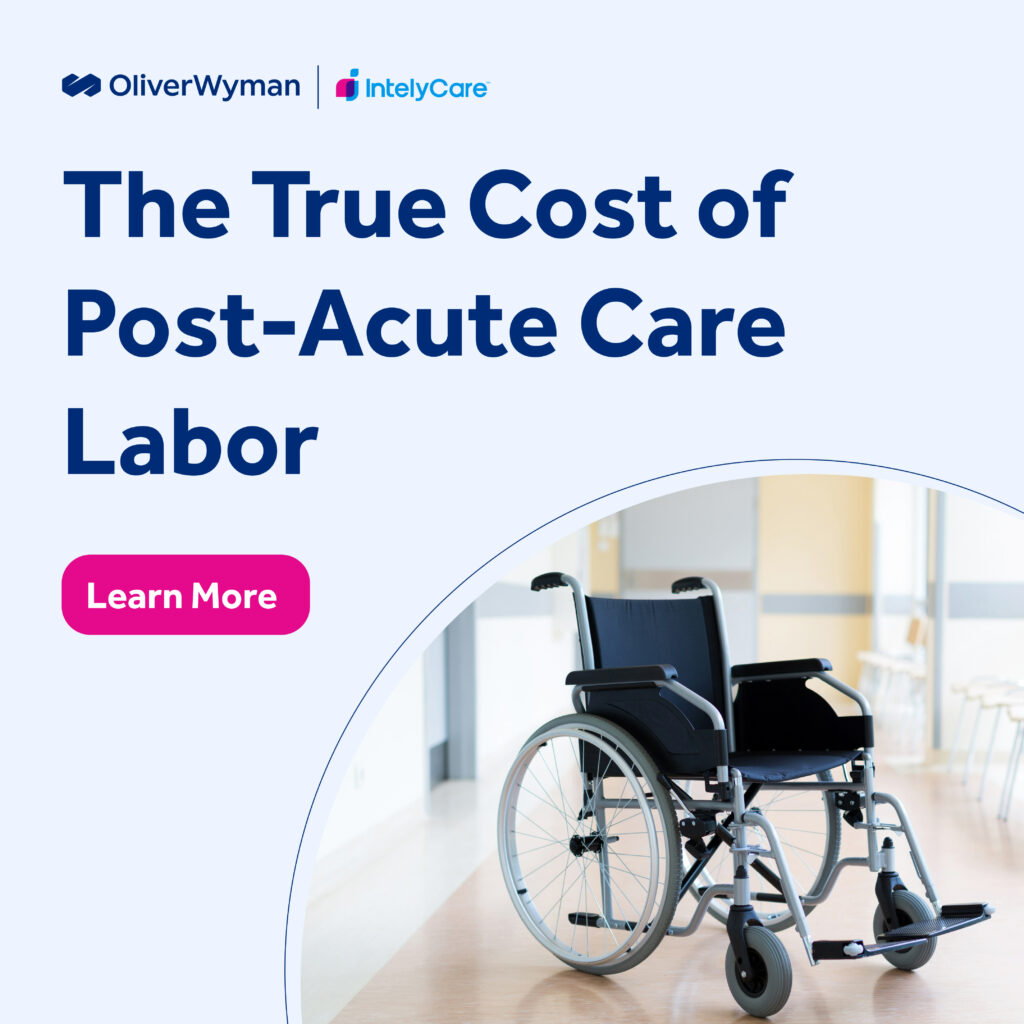Worried that you’re overpaying for nursing staff because of the pandemic? A new study shows that contingent workers actually provide a more cost-effective path to improving occupancy rates than full-time staff.
Many post-acute care facilities are desperate to improve staffing levels to increase occupancy and profitability, but in today’s market, staffing costs are mounting. So, how can your facility boost occupancy rates without overpaying for staff?
While contingent labor is often perceived as a less preferable solution than full-time employees, in many cases, it’s actually less expensive, more flexible, and less resource-intensive than identifying, recruiting, and retaining new full-time talent.
In “The True Cost of Post-Acute Care Labor,” global management consulting leader Oliver Wyman provides a side-by-side assessment of the total costs of full-time and contingent nursing labor.
While contingent labor is perceived to come at a “premium” cost because of the often-higher wage rate, the study finds that simply comparing hourly wages across contingent and full-time labor is misleading. Staffing providers cover payroll taxes, recruitment and credentialing costs, retention bonuses, and other expenses and benefits normally borne by healthcare facilities.

The study, using industry data from global asset management firm Mercer, found that on an hourly basis, a full-time employee costs a facility between 1.9 – 2.2x their hourly wage rate. Because of the additional expenses, the cost of filling a shift with a full-time registered nurse is 33% higher than the contingent labor rate that is being paid. For nursing assistants, the cost is 26% higher than the contingent labor rate.

Additional expenses can represent 36 – 43% of the total cost of a full-time employee. As demand for skilled nursing labor continues to rise in the current market, recruitment expenses can account for 13% of the total cost of a new full-time registered nurse. And health benefits can reach up to the equivalent of three additional months of wages each year.

When facilities use contingent workers, they’re making a smart financial decision. While contingent workers may have higher hourly wages than full-time employees, gone are the additional expenses of recruitment, benefits, bonuses and more. Using contingent workers also helps facilities maintain a full workforce, – helping to increase census revenue and ease burnout among full-time staff.
Want to learn more?

